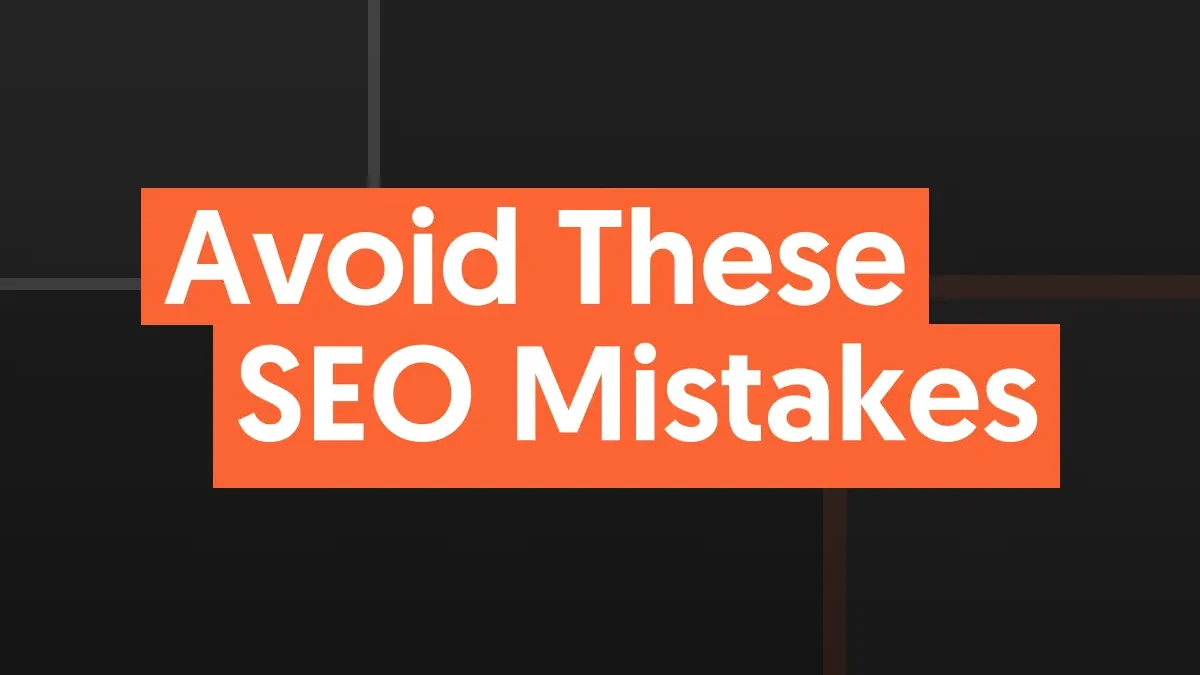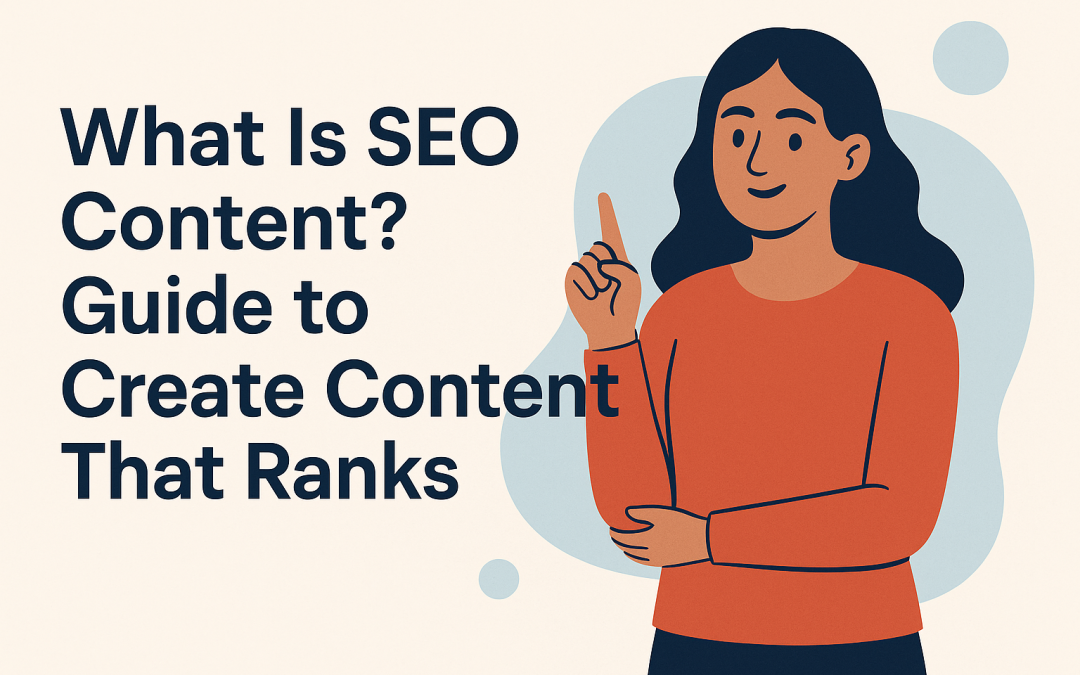In today’s competitive digital landscape, creating valuable and optimized content is essential to driving traffic and engaging users. Whether you’re a small business owner, a digital marketer, or an aspiring content creator, understanding SEO content is your gateway to online visibility.
But what exactly is SEO content, and why does it matter so much?
SEO content refers to any content created with the goal of ranking in search engines and attracting organic traffic. It’s not just about placing keywords into a page, it’s about offering value, solving problems, and aligning with what people are actively searching for online.
This guide offers a comprehensive look into what SEO content is, why it matters, the different types, and how to create content that ranks and converts. From strategy to examples, this guide serves as your practical reference to building an SEO-friendly content ecosystem.
Whether you’re a beginner or looking to sharpen your skills, you’re in the right place.
What Is SEO Content?
At its core, SEO content is any form of online content—blog posts, videos, product pages, etc.—that is designed to appear in search engine results.
But ranking is just part of the picture. Effective SEO content aligns with:
-
User intent: What your audience is truly looking for
-
Keyword strategy: Targeting relevant terms people actually search
-
Structure and readability: Easy to consume and navigate
-
Trust and depth: Authoritative, accurate, and actionable
Imagine SEO content as a bridge: it connects your expertise with a person actively searching for it online.
For example, when someone types “how to choose a coffee grinder,” a well-crafted blog post with structured headings, detailed information, and product links can rank and meet their need.
Why Is SEO Content Important?
Creating SEO content isn’t just about getting more website visitors—it’s about attracting the right visitors.
Here’s why it matters:
-
Visibility: Search engines are the primary way people discover content. High-quality SEO content helps you appear in top results.
-
Traffic Generation: Unlike paid ads, SEO content continues to bring traffic long after publishing.
-
Authority Building: Well-researched, expert-driven content positions your brand as a trusted source.
-
Lead Generation & Sales: SEO content can guide users from discovery to purchase decisions, increasing conversions organically.
Businesses that consistently publish SEO content often experience compounding growth: more keywords, more visibility, and more opportunities to earn trust.

The Main Types of SEO Content
Not all SEO content looks the same. Different formats serve different purposes and suit different stages of the buyer journey.
a. Blog Posts
Blog posts are the most versatile and accessible form of SEO content. They help educate, inform, and engage your audience.
Use them to target long-tail keywords, answer specific questions, and build topical relevance.
Example:
-
“How to Improve Your Website Speed”
-
“Best Tools for Keyword Research in 2025”
b. Product or Service Pages
These are core to commercial websites. They help customers understand what you offer while targeting transactional search intent.
Tips:
-
Use keyword-rich headings and descriptions
-
Include features, benefits, and FAQs
-
Optimize for both user clarity and search discoverability
c. Landing Pages
Focused on a single goal or action, such as a download or sign-up. They’re great for PPC or organic traffic.
Best Practices:
-
Strong CTA
-
Minimal distractions
-
Intent-aligned headlines
d. Long-form Guides & Pillar Pages
These are in-depth resources on a broad topic, often internally linking to supporting articles. They help build authority and keep users engaged longer.
e. Visual and Video Content
Videos on YouTube or infographics on your blog can be optimized for SEO using structured data, transcripts, and strategic descriptions.
f. Listicles, How-To Articles, and FAQs
These structured formats improve scannability and are excellent for featured snippets.
Examples:
-
“10 Tools Every Marketer Needs”
-
“How to Write SEO-Friendly Headlines”

How to Create SEO Content That Ranks
Creating SEO content requires more than just keyword stuffing. It’s a thoughtful process rooted in planning, research, and execution.
a. Understand Search Intent
Search intent tells you why someone is searching. Categories include:
-
Informational: How-to, definitions, tips
-
Navigational: Looking for a specific website or brand
-
Transactional: Ready to buy or take action
Match your content to the intent behind the keywords you target.
b. Keyword Research
Effective keyword research helps you discover:
-
What your audience is searching for
-
How competitive each term is
-
Related long-tail opportunities
Use tools like Google Keyword Planner, Ahrefs, Semrush, or WordStream’s Free Keyword Tool.
Look for a mix of:
-
High-volume short-tail keywords (e.g., “seo content”)
-
Low-competition long-tail keywords (e.g., “how to write seo blog posts for beginners”)
c. Plan Your Content with Strategy
Map keywords to funnel stages:
-
Top of Funnel (TOFU): Blog posts, educational content
-
Middle of Funnel (MOFU): Case studies, comparisons
-
Bottom of Funnel (BOFU): Product pages, testimonials
Structure your content clusters with internal linking to distribute page authority.
d. Structure Your Content for SEO
-
Use H1 for the title, followed by H2s and H3s
-
Use bullet points and short paragraphs
-
Ensure keyword placement in headers, intro, and meta tags
e. Optimize for On-Page SEO
-
Include your keyword in the title, slug, and description
-
Use descriptive image alt text
-
Implement schema markup for FAQs, articles, and reviews
f. Add Value with Originality and Depth
-
Use expert insights, statistics, and original research
-
Avoid thin or duplicate content
-
Include updated references and media for freshness
SEO Content Examples (With Breakdown)
Example 1: Blog Post
Topic: “Top 10 Tools for SEO in 2025”
-
Keyword: “SEO tools 2025”
-
Structure: Introduction → List with H2s → Conclusion
-
Optimization: Internal links, alt text, schema
Example 2: Product Page
Topic: “SEO Content Audit Services”
-
Keywords: “SEO content audit,” “content audit agency”
-
Focused CTAs, schema reviews, testimonials, and FAQs
Example 3: Guide
Topic: “Beginner’s Guide to Technical SEO”
-
Depth: 3000+ words, visuals, code snippets
-
Pillar strategy with internal links to technical subtopics

How to Optimize Existing Content for SEO
Your existing content is a hidden asset that many websites overlook. While it’s tempting to always focus on publishing new articles, optimizing what you’ve already created can yield faster and more cost-effective SEO results.
In many cases, refreshing a blog post or landing page can propel it from page 2 of Google to the top 3 results where the majority of clicks happen.
Let’s break down how to strategically optimize your existing content to improve rankings, increase traffic, and provide more value to your audience.
🔍 Step 1: Audit – Identify Underperforming or Outdated Pages
Before making any changes, conduct a content audit to identify which pages need attention. Focus on pages that meet any of the following criteria:
-
Low organic traffic over the past 6–12 months
-
High impressions but low click-through rate (CTR)
-
Outdated information, stats, or references
-
Pages with declining rankings or visibility
-
Thin content with low word count or value
Use tools like:
-
Google Search Console – See impressions, clicks, average position
-
Google Analytics – Identify high bounce rates and low engagement
-
SEO tools (Ahrefs, Semrush, Screaming Frog) – Find broken links, poor keyword optimization, technical issues
Prioritize pages that have existing backlinks, moderate rankings (positions 6–20), or valuable keywords—these are easier to “revive” than starting from scratch.
Step 2: Refresh – Add Updated Data, Keywords, and Images
Search engines reward content that is fresh, relevant, and updated.
Ways to refresh your content:
-
Update outdated facts and stats with current-year data
-
Replace broken or outdated links with authoritative alternatives
-
Add relevant long-tail keywords and variations to broaden reach
-
Include recent case studies, examples, or industry trends
-
Revise the introduction and conclusion to reflect any new insights
-
Incorporate high-quality images, videos, charts, or infographics
Pro Tip: Add a “Last Updated” date at the top of your post—it signals freshness to both search engines and users.
🧱 Step 3: Enhance Structure – Improve Headers, Internal Links, and Formatting
Good content structure improves both user experience and SEO performance.
Here’s how to strengthen structure:
-
Use clear H2 and H3 headings that contain your focus keywords
-
Break long paragraphs into shorter ones (2–4 lines) for readability
-
Add bullet points and numbered lists for skimmable content
-
Improve internal linking by connecting to newer, relevant pages on your site
-
Add a Table of Contents (TOC) at the top for long-form articles
-
Include anchor text optimization in internal links
A well-structured article not only increases time on site but can also earn featured snippets, People Also Ask placements, and other rich results.
🧬 Step 4: Fix Cannibalization – Consolidate Competing Content
Content cannibalization happens when multiple pages on your site compete for the same keyword. This can confuse search engines and dilute your rankings.
How to resolve it:
-
Identify pages targeting the same or very similar keywords
-
Analyze which one performs best in terms of traffic and backlinks
-
Merge weaker content into the stronger page, and use 301 redirects
-
Reposition content with different focus keywords or intent where needed
By consolidating overlapping content, you create a single, more authoritative piece that can rank higher and perform better in search results.
💡 Step 5: Add Schema Markup – FAQ, How-To, Article, Product, etc.
Schema markup adds structured data to your content, helping search engines understand context and display rich snippets.
Add appropriate schema types to boost visibility:
-
FAQPage Schema – For pages with frequently asked questions
-
HowTo Schema – For instructional or step-by-step content
-
Article Schema – For news or blog content
-
Product Schema – For eCommerce or service offerings
-
LocalBusiness Schema – For businesses targeting local customers
You can generate schema using tools like Google’s Structured Data Markup Helper or JSON-LD generators, and validate it using Rich Results Test.
Pages with schema markup can appear with enhanced results in SERPs, increasing CTR and visibility.
📈 Bonus: Use Google Search Console for Opportunity Mining
Google Search Console is one of your most powerful tools for content optimization.
Look for content opportunities like:
-
Pages ranking on page 2 or bottom of page 1 (positions 6–20) – These are easiest to push up with improvements
-
High-impression, low-CTR keywords – Revise your meta title and description to make them more engaging
-
Pages with lost rankings or sudden drops – Refresh and fix issues identified above
-
Search queries that your content is accidentally showing up for – Refine your targeting or create new supporting content
By regularly reviewing these insights, you can make data-driven decisions that directly influence your content’s performance.

⚠️ Common SEO Content Mistakes to Avoid
Even the most seasoned content creators and SEO professionals can slip up when producing or optimizing content.
These mistakes may seem minor, but they can significantly affect your rankings, visibility, and credibility in search results.
Avoiding these pitfalls ensures your content performs better, keeps readers engaged, and earns trust from both users and search engines.
1. Keyword Stuffing – Overusing Keywords Degrades Readability
What it is:
Keyword stuffing is the excessive and unnatural repetition of target keywords within a page. This was once a common tactic to manipulate rankings, but it now backfires.
Why it’s harmful:
-
Makes your content sound robotic or forced
-
Decreases readability and user satisfaction
-
Can trigger search engine penalties or ranking suppression
Better approach:
-
Focus on keyword placement in strategic areas: title tag, H1, H2s, intro, conclusion, and once or twice in the body.
-
Use natural language and semantic variations (LSI keywords).
-
Prioritize the reader’s experience—write for humans first, optimize for search second.
✅ Example fix:
Instead of repeating “best car towing service in Canberra” five times, use variations like:
-
“Canberra’s most reliable towing company”
-
“Affordable roadside assistance options”
-
“Top-rated tow truck service in your area”
2. Ignoring Search Intent – Mismatched Content Confuses Users
What it is:
Search intent refers to the reason behind a user’s query—informational, navigational, transactional, or commercial investigation. Ignoring it results in content that doesn’t satisfy the user’s needs.
Why it’s harmful:
-
Increases bounce rates and reduces dwell time
-
Lowers click-through rate if the meta title/description doesn’t match the intent
-
Hurts your credibility and trust with users
Better approach:
-
Analyze the top-ranking pages for your target keyword to determine what users are expecting.
-
Match your content type accordingly:
-
Informational intent: Detailed guides, how-tos, FAQs
-
Transactional intent: Product pages, service landing pages, pricing info
-
Navigational intent: Branded content, homepage links
-
Commercial intent: Comparison posts, reviews, case studies
-
✅ Example fix:
If someone searches “how to change a flat tire,” they want step-by-step guidance, not a pitch for tire replacement services.
3. Poor Formatting – Long Paragraphs and No Structure Reduce Engagement
What it is:
Content that lacks visual hierarchy or proper formatting makes it difficult for users to scan, understand, or enjoy reading.
Why it’s harmful:
-
Reduces engagement and time on page
-
Increases bounce rates
-
Makes your content unappealing on mobile devices
Better approach:
-
Use short paragraphs (2–4 lines max)
-
Break text with subheadings (H2, H3) that organize your message
-
Add bulleted or numbered lists for clarity
-
Use bold text for emphasis and highlight important points
-
Embed images, charts, videos, and infographics for visual variety
✅ Example fix:
A wall of text on SEO basics can be broken into:
-
“What is SEO?”
-
“Why SEO Matters in 2025”
-
“Technical vs. On-Page SEO”
This creates a better user experience and signals quality to search engines.
4. Duplicate Content – Can Harm Rankings and Credibility
What it is:
Duplicate content refers to identical or very similar blocks of text across multiple pages on your own site or across the web.
Why it’s harmful:
-
Confuses search engines about which version to rank
-
Dilutes your page authority and link equity
-
Can lead to ranking drops or deindexing
Common causes:
-
Copy-pasting from competitors or manufacturers
-
Using boilerplate descriptions across product pages
-
Publishing content on multiple domains or subdomains
Better approach:
-
Use original, human-written content tailored to your audience
-
Use canonical tags to indicate preferred pages
-
Consolidate similar pages with 301 redirects
-
Refresh thin or low-value duplicate pages with new insights and unique data
✅ Example fix:
Instead of duplicating the same “About Us” copy across multiple service pages, write service-specific intros explaining your unique approach.
5. No Internal Links – Missed Opportunity for Authority Flow
What it is:
Internal linking is the practice of linking from one page on your site to another, helping users navigate and distributing SEO value (link equity).
Why it’s harmful to ignore:
-
Pages become isolated, reducing crawlability and visibility
-
Wasted opportunity to guide users to high-converting or informative content
-
Weakens your topical authority on related subjects
Better approach:
-
Link contextually from high-traffic articles to related service/product pages
-
Use descriptive anchor text that includes relevant keywords
-
Regularly audit your internal links to eliminate broken or outdated ones
-
Add navigation menus, related posts, and breadcrumb trails
✅ Example fix:
On a blog about “on-page SEO,” link to:
-
A complete guide on “technical SEO”
-
A post on “how to write SEO titles and meta descriptions”
-
Your SEO services page
This strengthens your internal content ecosystem and helps both users and search bots.
Building a Long-Term SEO Content Strategy
An isolated post won’t move the needle. Consistency matters.
Long-term success depends on:
-
Editorial Calendar: Plan topics by week or month
-
Content Clusters: Interlink related pages to build authority
-
Topic Authority: Go deep on core themes
-
Evergreen Content: Focus on posts that stay relevant over time
-
User Feedback: Use comments, heatmaps, and analytics to iterate
Consistency, combined with agility, creates a system that drives long-term results.
Conclusion & Action Plan
SEO content is more than words—it’s the foundation of your digital visibility. When you create content that aligns with user intent, solves real problems, and follows a structured approach, you naturally earn trust, traffic, and conversions.
Action Plan:
- Start with keyword research
- Plan your content calendar
- Optimize for clarity, value, and relevance
- Measure and improve consistently
Whether you’re writing your first blog post or scaling a content strategy, this guide gives you the tools to make your content work smarter—not harder.
Frequently Asked Questions (FAQs)
What is SEO content in digital marketing?
SEO content is content created to improve visibility in search engines and attract organic traffic.
How do I write SEO-friendly content?
Use keyword research, structure your content, match search intent, and optimize for readability and relevance.
What are examples of SEO content?
Blog posts, service pages, landing pages, guides, product descriptions, videos, and FAQs.
What type of content is best for SEO?
Blog posts, long-form guides, pillar pages, and optimized product or service pages tend to perform best.
How long should SEO content be?
It depends on the keyword, but in-depth posts of 1500–3000 words often perform well.
What is the difference between SEO content and regular content?
SEO content is strategically optimized to rank in search engines, while regular content may lack this focus.
Do images help with SEO content?
Yes, especially when optimized with alt text and proper file names. They enhance UX and visual appeal.
How often should I update my SEO content?
Review and refresh at least every 6–12 months, or when significant changes in the topic occur.
What’s the best keyword density for SEO content?
There’s no magic number; aim for natural integration of keywords throughout your content.
Should I write for humans or search engines?
Always write for humans first while keeping search optimization in mind.

